The Camera Light-meter Usually Gives an Exposure Read-out That Indicates:
How to use a lite meter for photography (and why not to trust the camera meter!)
Watch video: How to use a lite meter for photography
You're ready to get-go taking pictures only, earlier you start clicking the shutter, y'all need to work out the correct exposure for your photographs. The question is, when your photographic camera has a built-in meter for this purpose, why practise and so many photographers and professionals buy an dedicated handheld meter?
The answer is simple: the best light meters give an empirical reading of the actual light in your frame, whereas a camera meter gives a misleading reading of the reflected light.
A handheld meter (besides called an incident meter) takes an incident reading, significant that information technology measures the light that falls direct onto the field of study. Your photographic camera takes a reflective reading, metering the lite that bounces off the field of study. It's a bit similar measuring how much h2o is in a saucepan by pouring information technology into a measuring container, versus throwing the water at a wall and measuring how much splashes off.
On pinnacle of that, your camera is programmed to betrayal your images to according to 'middle greyness'. In other words, it wants the reflected light in your picture to have a tonality of eighteen% greyness (see 'Kodak Moment' below for an explanation of why) – and this causes all kinds of exposure problems.
For example, when your frame is filled with a bride in a white wedding dress, a lot of light is reflected at the photographic camera (far more than eighteen% grey). So a photographic camera's reflective meter reading thinks that your image is as well bright, and tells yous to massively underexpose the photograph. And when your frame is filled with a groom in a blackness adjust, it tells yous to massively overexpose for the exact contrary reason – even though the calorie-free hasn't actually changed. And if the light hasn't changed, why do you need to change your exposure?
The answer is that you lot don't. An incident meter doesn't measure reflected light, and it doesn't intendance what percentage of greyness is in the frame – it simply measures the light that is actually striking your subject field. And so, it always gives an accurate reading!
How to utilise a low-cal meter
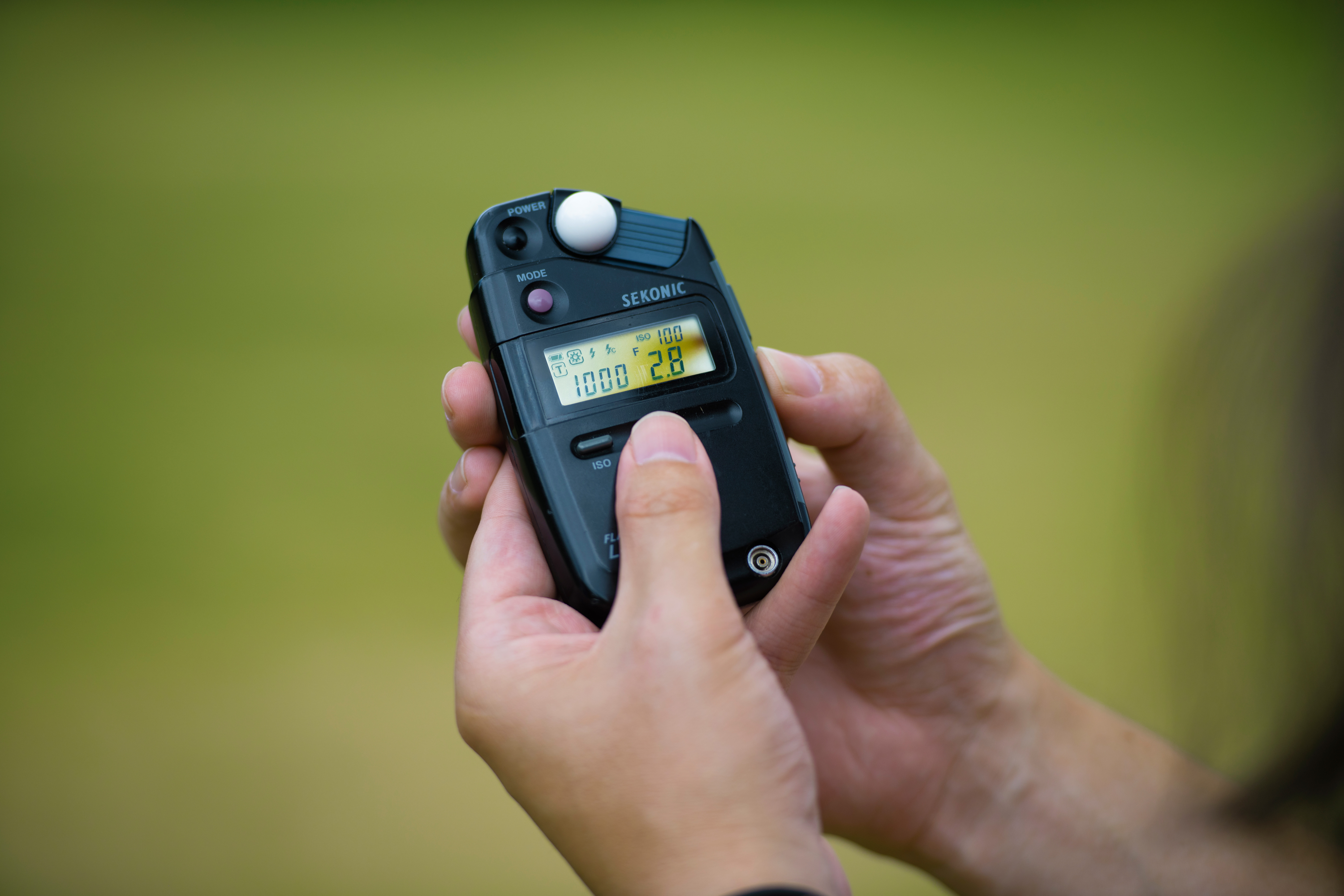
01 Set your ISO
Firstly, brand sure that the ISO on your meter matches the ISO you've assault your photographic camera. Also check that the meter is set to daylight or wink, depending on the light source that y'all want to measure.
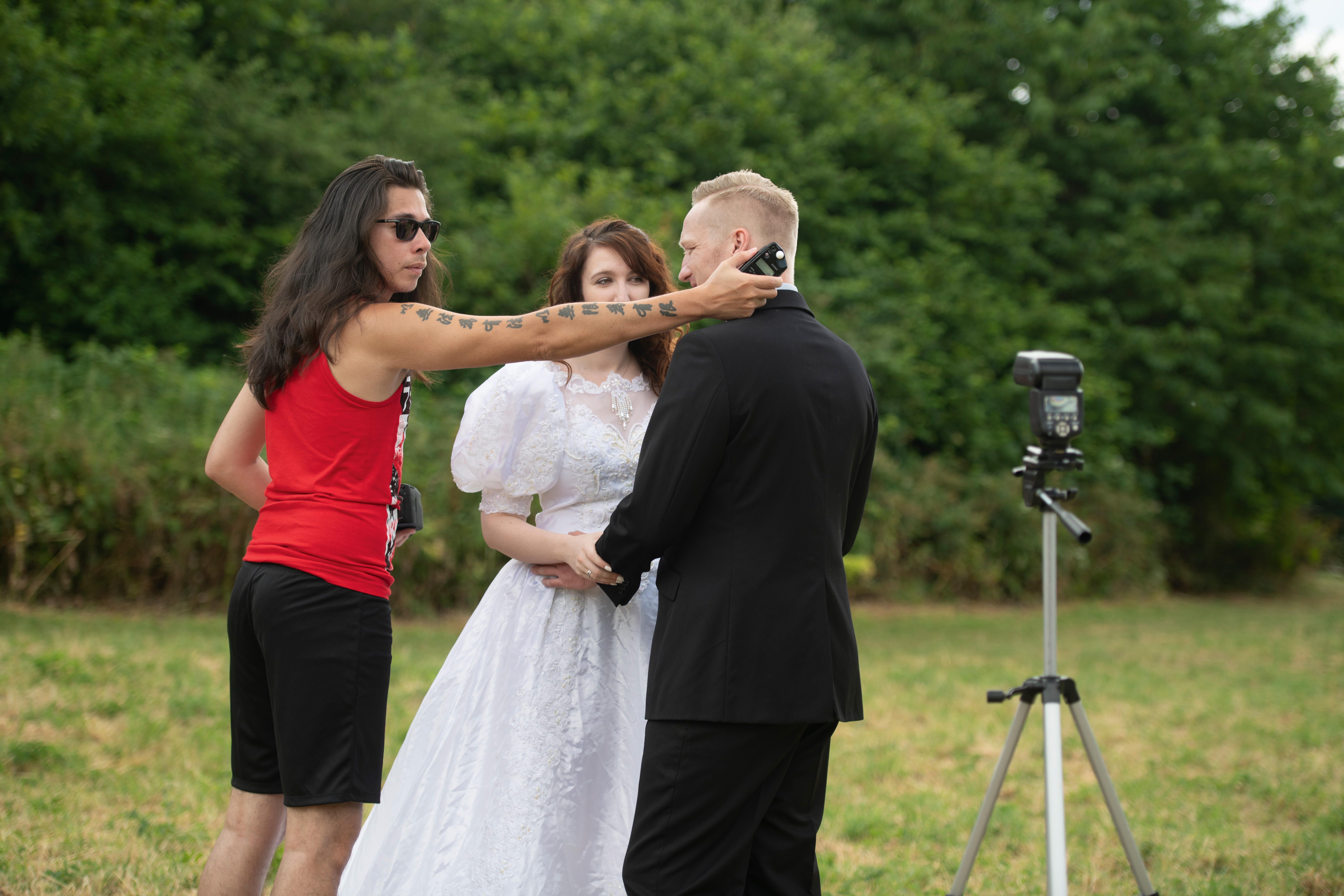
02 Have a reading
Agree your meter in forepart of your subject area, pointing towards low-cal that is illuminating them (non towards the camera). Now simply press the metering push to read the light measurement. With multiple lights sources, you tin measure them individually by pointing the meter towards each one. (And obviously if you are measuring flash, you will demand to trigger the light in order to take a reading!)
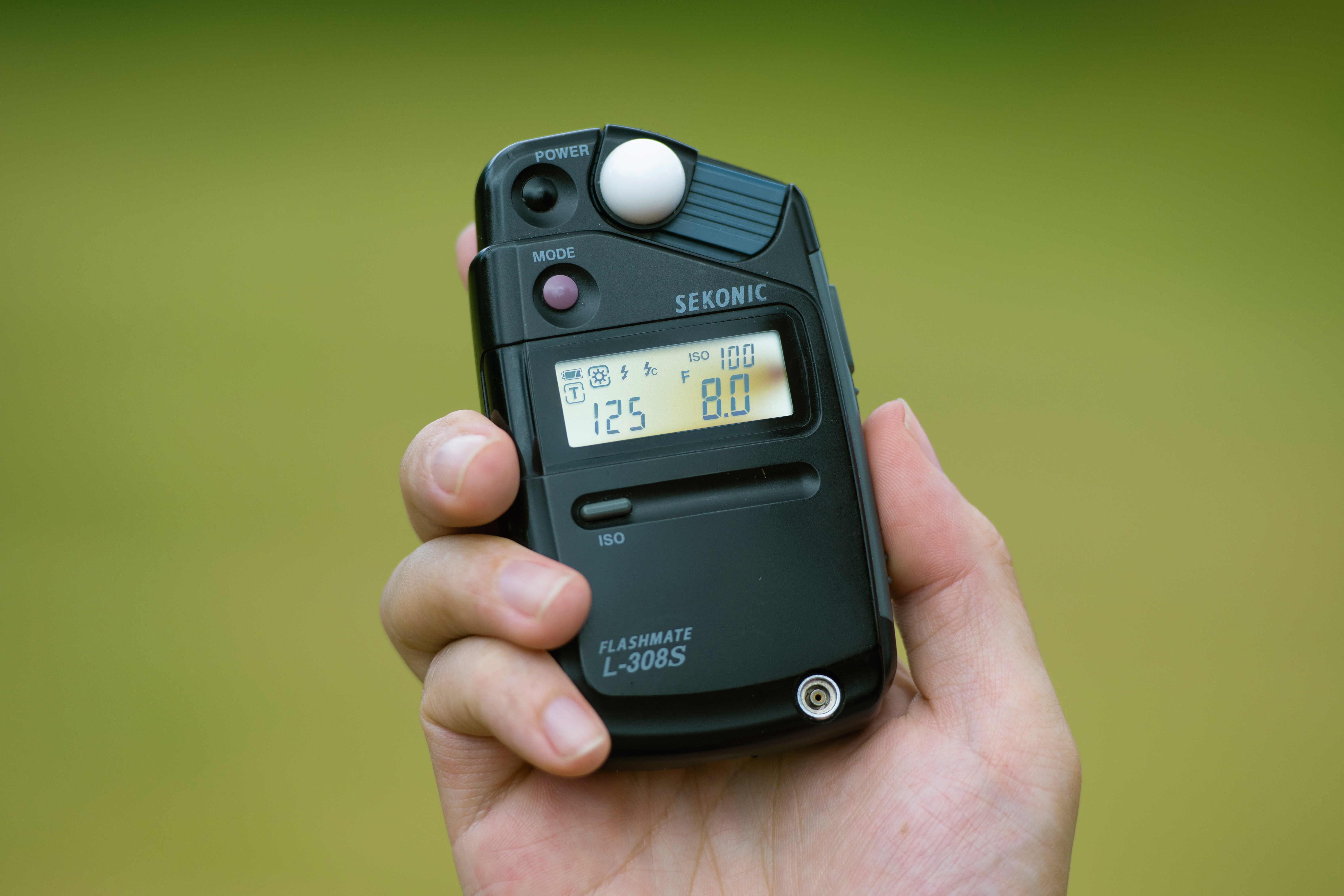
03 Dial the exposure on your camera
Now just set the metered reading on your camera's exposure settings (you will need to accept your photographic camera in transmission mode). If y'all want to take a meter reading for a specific aperture, to enable y'all to control depth of field, but enter your desired discontinuity on the meter and it will calculate the adjusted shutter speed for you.
Why yous shouldn't trust your photographic camera meter!
Every bit noted, a handheld incident meter takes an 'honest reading', based on the actual light that hits your subject(s). Since a camera meter takes a cogitating reading, and then calculates information technology according to the amount of midtones in your image, it will requite you a different reading every time the percentage of grey in your frame changes – even if you are simply reframing the same shot!
To illustrate, here are some images of a typical scenario – a helpmate and groom in a field on a day with consistent light. Nothing is changing between each shot, other than the framing (and, thus, the amount of grey tones) – since the lite hasn't inverse, there is absolutely no reason to change your exposure settings. Unless you lot heed to the photographic camera meter, that is…
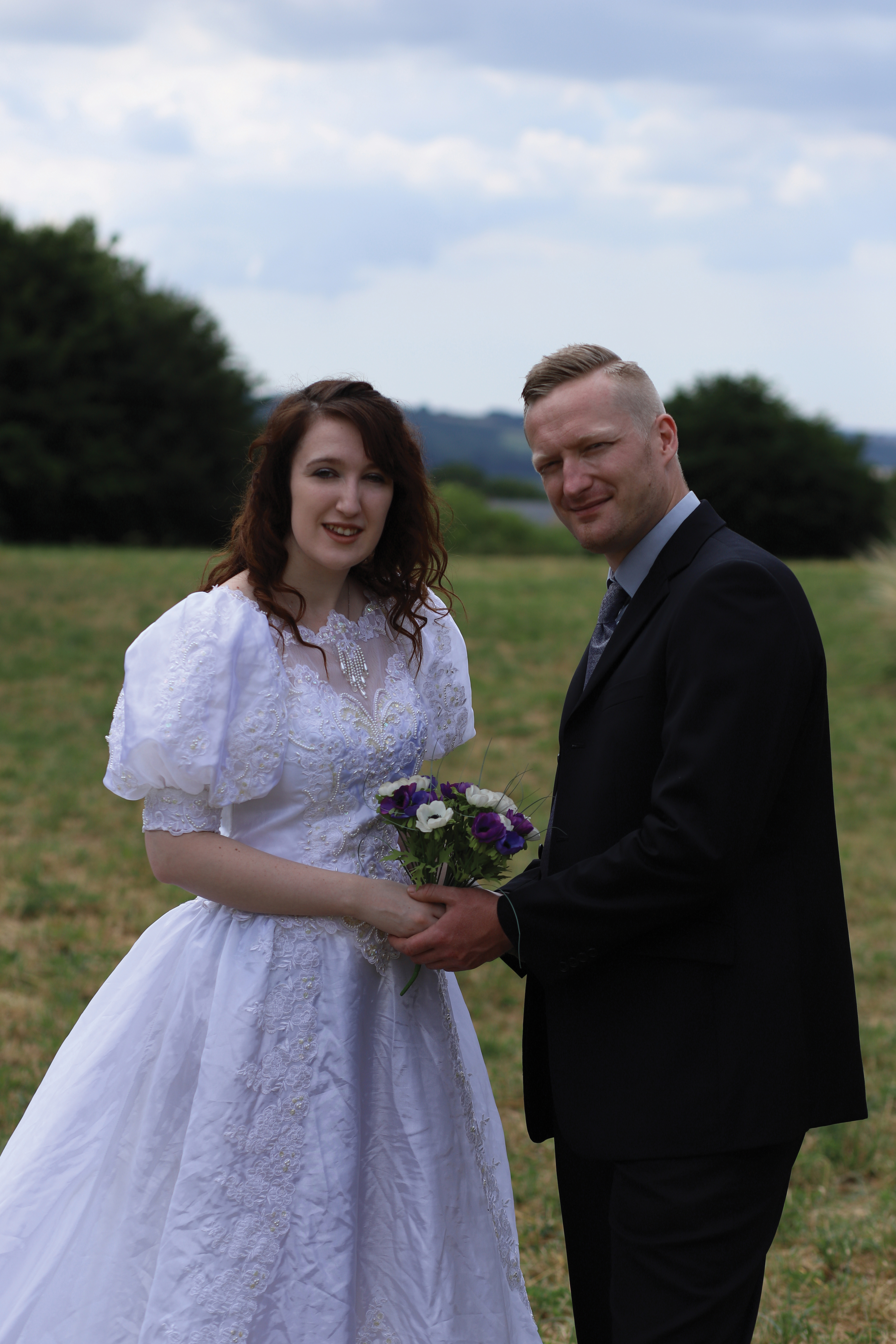

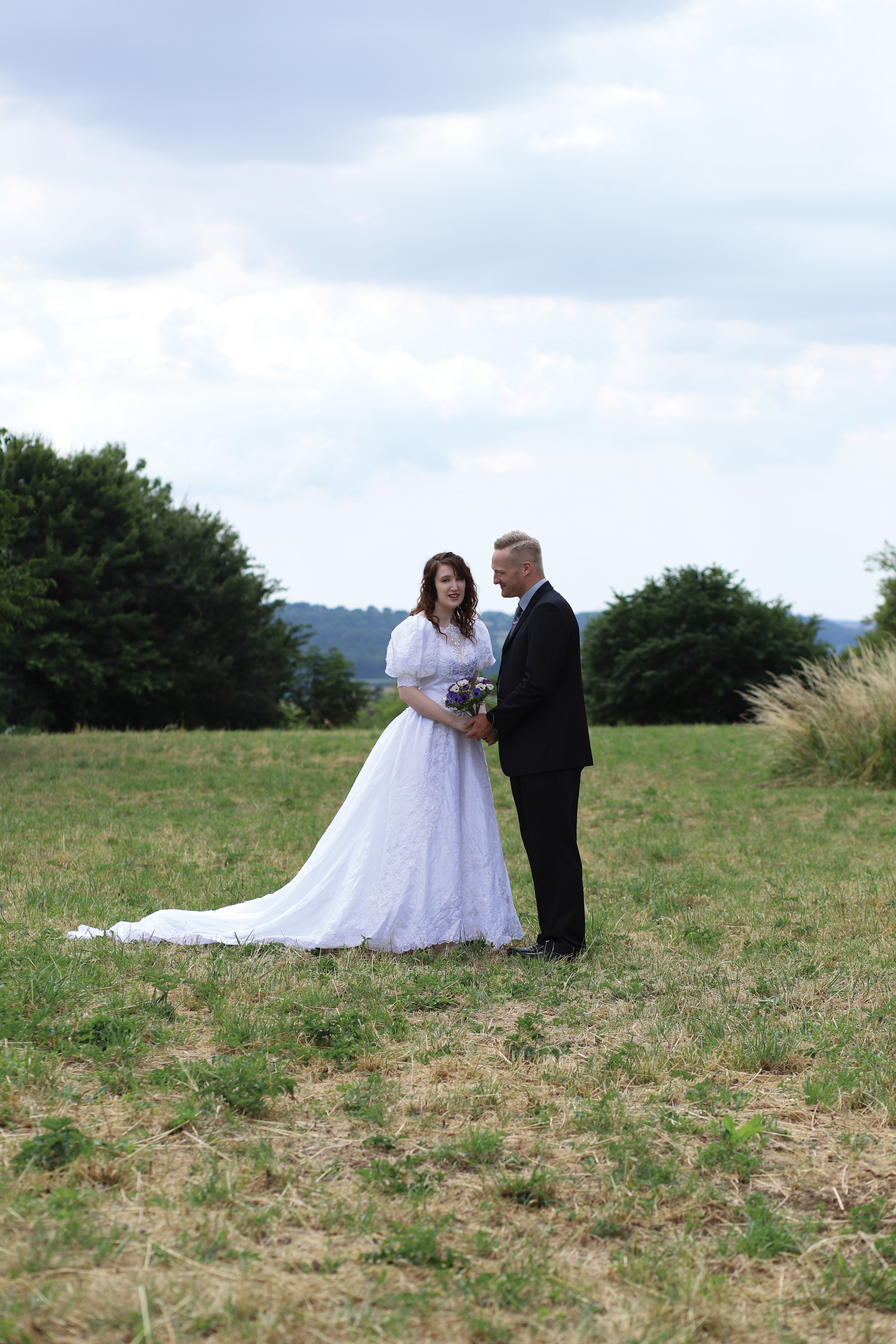
As yous tin see, the camera meter (set in aperture priority) tells us to use three very dissimilar exposure settings, from 1/1000 sec in the first prototype to a wildly different 1/640 sec in the third. But the light hasn't changed between the shots – the only deviation is the amount of midtones in each frame, with the white dress, black suit and grass (which registers equally mid-grey) confusing the camera's calculations.
Here is another example, to brand things even clearer. Both subjects are continuing in the same position, one subsequently the other, and the light has not changed, nevertheless the photographic camera is telling us to use two dramatically different exposures:

At ISO100 and f/4, the photographic camera told us to shoot the helpmate on the left at 1/2500 sec and the groom on the right at 1/200 sec – a massive difference in exposure! Just why? If the calorie-free hasn't inverse, then what has?
It's the corporeality of greyness tones in the frame. The photographic camera sees that the dress is bright white – far brighter than the 18% grey it is looking for – and thus wants to radically underexpose the image so that it has the 'correct' amount of mid-grey tones.
Likewise, it gets dislocated by the black conform, because it sees the epitome as existence so much darker than xviii% grey, and so this time it tells us to massively overexpose the image. Merely it's all based on a completely arbitrary calculation!

These final shots were taken using the exposure settings from our handheld meter, which remained constant at ane/2500 sec, f/one.8, ISO100. As you tin can see, it doesn't matter how nosotros frame each shot considering the meter isn't having to calculate how much white and blackness is in the epitome each time; it only gives a single, empirical reading of the calorie-free.
This means that nosotros can merely meter one time, and take equally many unlike pictures and compositions every bit nosotros want until the light changes or nosotros determine to change information technology!
Kodak moment

And then what is this 18% 'middle' greyness, and why does your camera desire your pictures to conform to information technology?
In the 1930s, Kodak wanted to put 'Electric Center' light meters in its cameras, starting with the Super Six-20. To determine what the "right" exposure should exist, the company's physicists took a yard prints from a print run, cut them into inches foursquare and measured them with a densitometer.
They surmised that, to go an average picture of an average subject field, taken at an average location under average lighting weather, on an boilerplate day by an boilerplate photographer using boilerplate equipment, 18% grayness volition go you in the ballpark.
In one case y'all realize that THIS is what your camera is programmed to meter for, it's a minor miracle that our pictures come out at all when using the photographic camera meter!
Read more:
All-time lite meter for photography
Wedding photography tips
Best photography lighting kits
Related articles
Source: https://www.digitalcameraworld.com/tutorials/how-to-use-a-light-meter-and-why-not-to-trust-the-camera-meter
0 Response to "The Camera Light-meter Usually Gives an Exposure Read-out That Indicates:"
Post a Comment